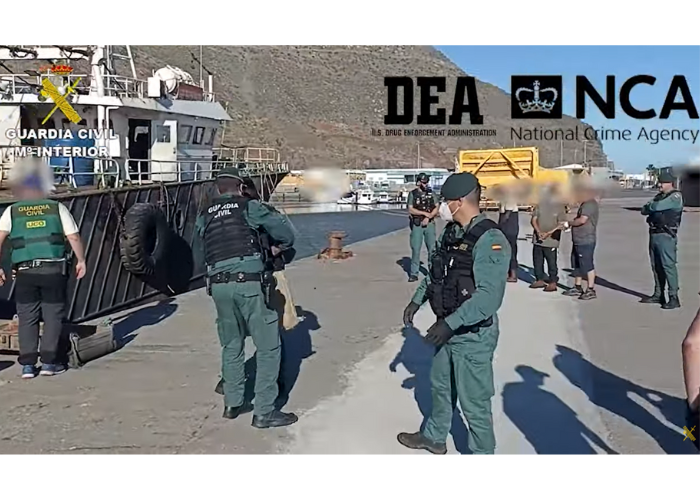mmGALICIA – As part of operation BROWN SUGAR, The Guardia Civil have arrested 16 people allegedly connected to an important criminal organisation. Based in Galicia, the gang was dedicated to bringing large consignments of drugs via sea to the Iberian Peninsula.
The organisation used boats which pretended to be legal fishing boats off the coast of Africa. Furthermore, it used the relationship directly from Galician organisations with the so-called “African route” of cocaine.
The investigation has completely dismantled one of the largest criminal organisations in Galicia, dedicated both to the introduction of large quantities of cocaine and heroin in Spain. A fishing boat was intercepted carrying 3,300 kilograms of cocaine in its interior in the waters of the Atlantic Ocean. It was bound for an undetermined point on the coast of Galicia.
Operation Brown Sugar began at the beginning of this year. Police had already identified all the members of the organisation and its criminal dynamics, having reeled off all the logistical steps that would culminate in the introduction of the narcotic finally apprehended.
“African cocaine route”
The operation confirmed this international drug trafficking route as one most used by large drug trafficking organisations. They consider it one of the “safest” and with the greatest guarantee of success for their interests.
Consequently, in the same way, the Guardia Civil has been monitoring for some time how certain Galician organisations have increased gradually their infrastructures in this sense to introduce drugs through this route.
Senegal to Galicia
In fact, as the investigation continued, it was possible to monitor the movement of some members of the investigated organisation to Senegal with the aim of personally organising and coordinating this shipment of cocaine, taking charge of both the freight of the ship and the hiring of the crew, having foreseen in the same way, which boats would go out to meet this ship as it approached its destination. This being one of the few occasions in which the investigators have been able to prove all the efforts and meetings held that would have culminated in the introduction of a huge amount of cocaine into national territory.
Once established in this way the roles of the different members was identified, it was possible to observe how they intensified different activities, which would indicate that they were preparing to smuggle the drug.
The agents were also able to find out how the investigated group had sophisticated means to transport the drug through different Spanish provinces, which allowed them to dispense with other shuttle vehicles that would warn of possible police checks, by having sophisticated concealment methods in double bottoms. hydraulics in the vehicles they used, to which was added the use of encrypted messaging between the communications of its members.
Guardia Civil Coordination by land, sea, and air
The course of the investigation allowed the identification of the ship that transported the narcotics, as well as those investigated that carried it out. This led to the Guardia Civil to to locate said vessel in the Atlantic Ocean using means of the Air Service and the Maritime Service of the Guardia Civil, who carried out an exhaustive search. It should be noted that these tasks were fruitful on December 18, when once located, agents of the Special Intervention Unit (UEI) and the Maritime Service of the Civil Guard, boarded the ship chartered by the Galician organisation to the north of the Canary Islands.


